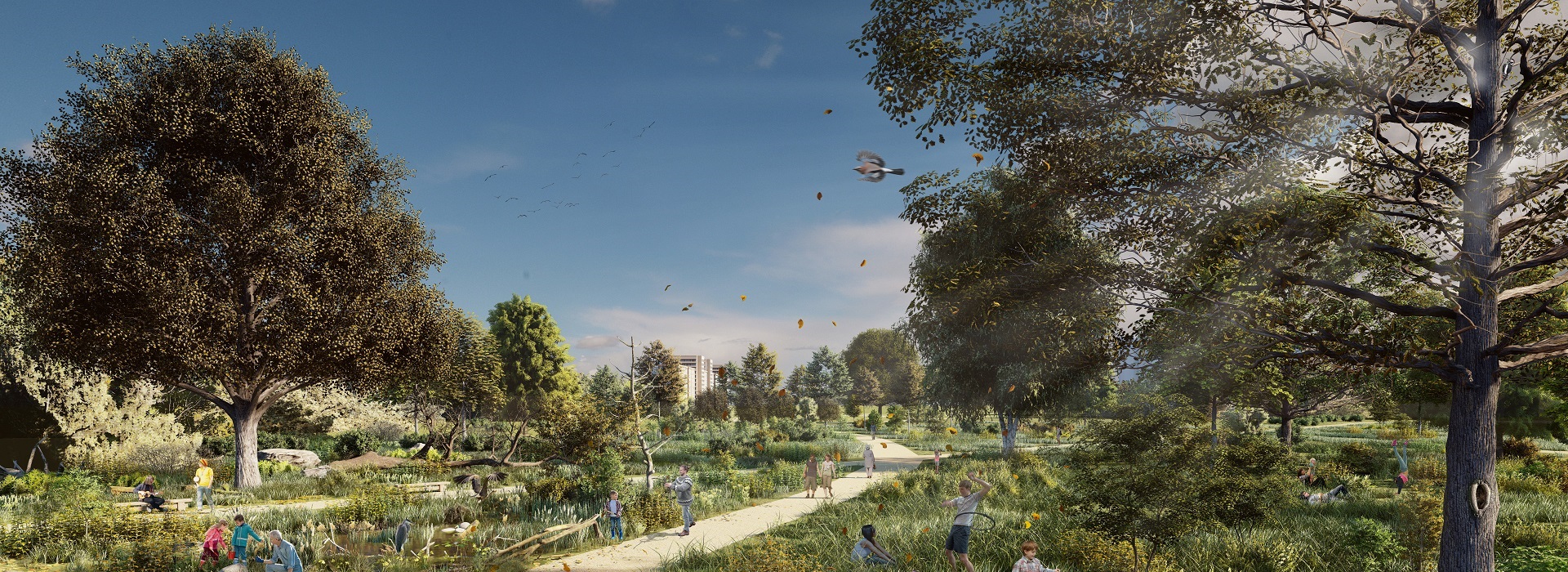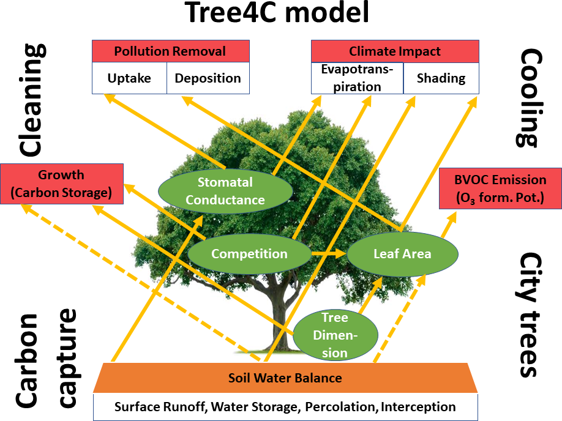Urban trees under climate stress: Functions and reactions
Urban trees provide shade, cool the air, bind CO₂ and offer many other ecosystem services that improve the urban climate and benefit people. But how well can they still fulfill these important functions under changing environmental conditions? To answer this, we use a specialized individual tree model. This allows us to precisely calculate how effectively selected urban trees contribute to cooling, carbon sequestration and other ecosystem services. In our analysis, we take into account both the specific characteristics of the tree species and the environmental conditions at its respective location. We also aim to understand how stress impacts tree performance. To do this, we combine:
✅ Short-term observations: Monitoring growth and drought stress by measuring tree dimension, diameter fluctuations, and as soil moisture.
✅ Long-term analyses: molecular markers reveal the extent to which environmental stress limits the functional performance of trees.
This sub-project is a collaboration between researchers from the Plant Ecophysiology Group at the Institute of Meteorology and Climate Research – Atmospheric Environmental Research (IMK-IFU) and the Institute for Technology Assessment and Systems Analysis (ITAS).

